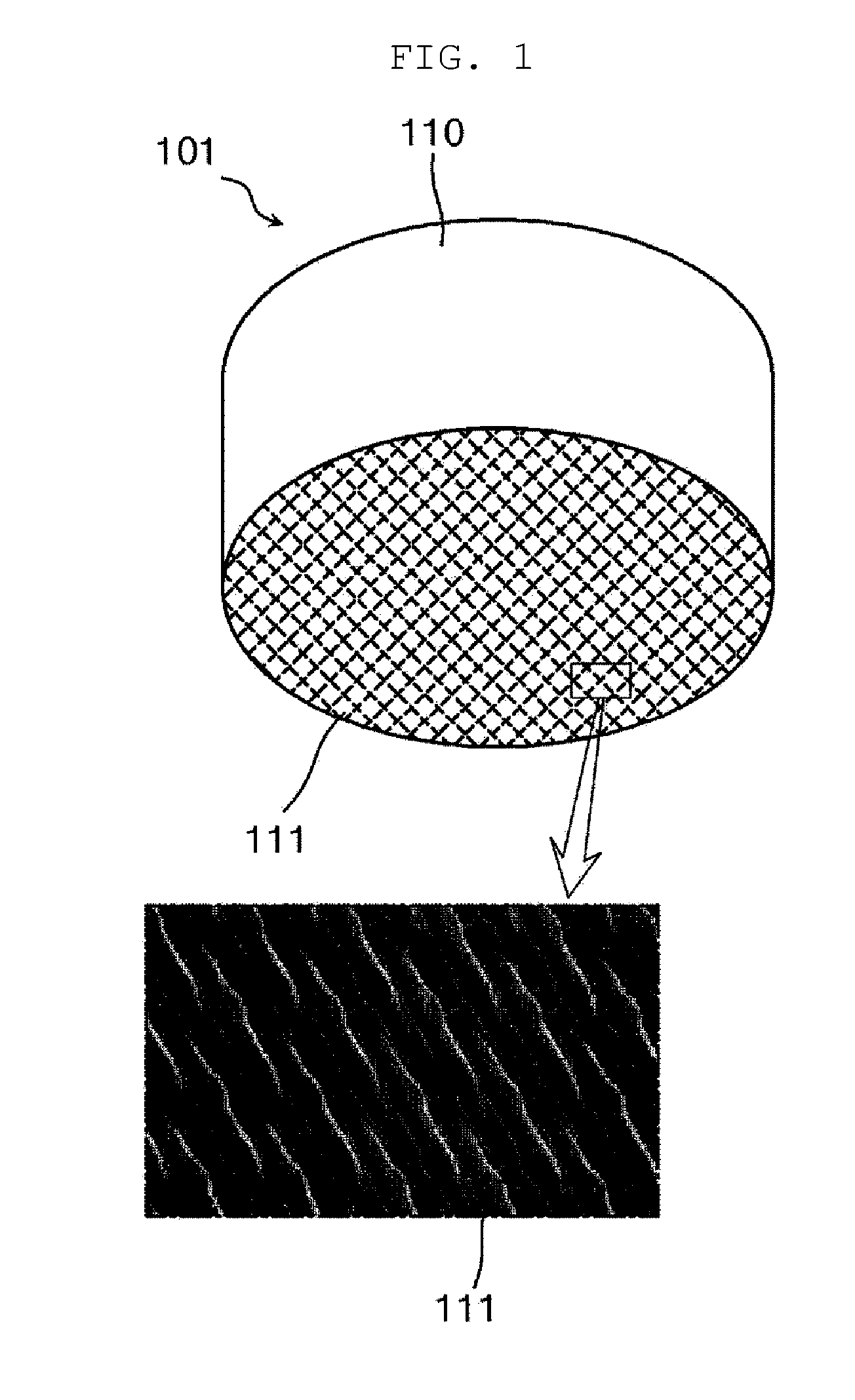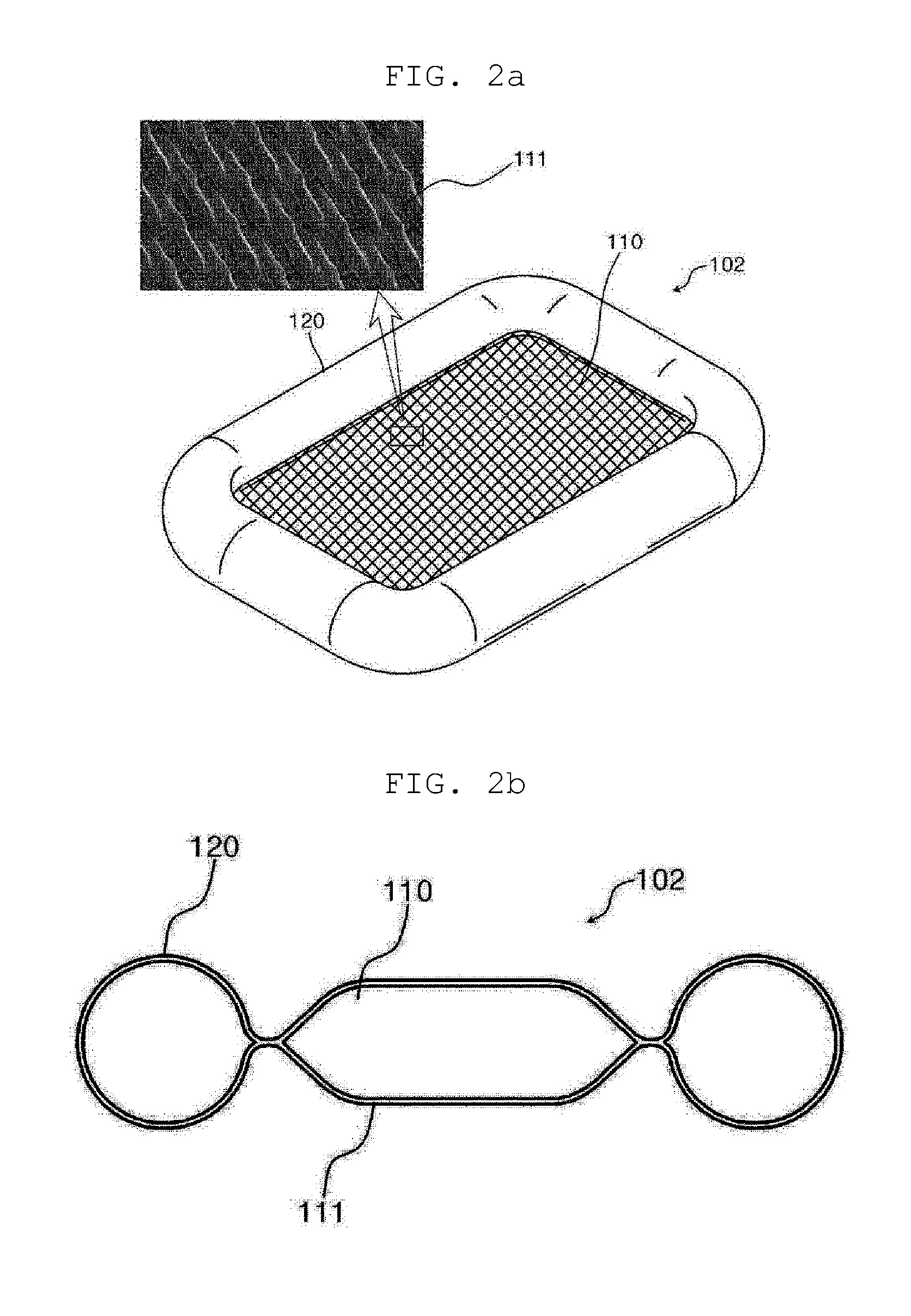Method for mass culturing photosynthetic microalgae by additionally supplying environmental water
- Summary
- Abstract
- Description
- Claims
- Application Information
AI Technical Summary
Benefits of technology
Problems solved by technology
Method used
Image
Examples
example 1
Measurement of Microalgae Permeability of Photobioreactor Prepared with Mesh Sheet
[0111]An experiment was conducted to investigate whether microalgae are released through a mesh sheet. Culture containers were constructed by attaching mesh sheets respectively prepared with PET, polyester and nylon to bottoms of plastic containers having a total volume of 100 ml. 60 ml of microalgae (wet weight: 0.5 g / l) (Tetraselmis sp.) was placed into the culture container and the container was allowed to float on a plastic container containing 1 l of f / 2-Si medium to investigate whether the microalgae were released to the outside of the culture containers prepared with the mesh sheets. A mesh size for nylon and PET was 5 μm, and a mesh size for polyester was 15 μm. If microalgae are released to the outside of the mesh sheet, the microalgae would grow using a medium at the outside. During the culture of microalgae, temperature was maintained at 20° C., and 100 μE / m2 / s of intensity of light was supp...
example 2
Measurement of Growth Level of Microalgae Using Photobioreactor Prepared with Mesh Sheet
[0114]Microalgae were cultured by practically using the culture container prepared with the mesh sheet, and also microalgae were cultured by using a semipermeable membrane of a cellulose material as a control.
[0115]1 l of f / 2-Si, and 1 l of natural seawater (NSW) were poured into two plastic water baths having a capacity of containing 2 l of an aqueous solution, wherein the NSW was prepared by diluting f / 2 medium to 1 / 30 in order to adjust nitrogen and phosphorus concentration similar to that of dissolved in seawater of Incheon. The mesh sheet with polyester or nylon material (0.003 m2) was attached to the bottom of the plastic reactor. 100 ml of culture medium, to which 0.05 g / l (wet weight) of microalgae were inoculated, was poured into the plastic container, and then the container was allowed to float on the water bath and microalgae were cultured (FIG. 15). As a control, the same width of a s...
example 3
Measurement of Salt Permeability of Photobioreactor Prepared with Mesh Sheet
[0117]In the present example, nutritional salt permeability was measured in the culture container prepared with the mesh sheet. For the control, a semipermeable membrane of a cellulose material was used to culture microalgae.
[0118]Nutritional salts permeability was measured with a transfer rate of nitrates, which is an important factor for culture of microalgae. A method for measuring nutritional salt permeability of the mesh sheet was as follows: 2 l of seawater including nitrates having concentrations of 100, 200 or 400 mg / l was prepared in a rectangular water bath; a rectangular plastic container containing 100 ml of seawater without nitrates was allowed to float on the water bath; and changes in the concentration difference due to introduction of nitrates from the water bath to the plastic container was measured with lapse of time.
[0119]Consequently, as shown in Table 2 below and FIG. 17, it can be found...
PUM
 Login to View More
Login to View More Abstract
Description
Claims
Application Information
 Login to View More
Login to View More - R&D
- Intellectual Property
- Life Sciences
- Materials
- Tech Scout
- Unparalleled Data Quality
- Higher Quality Content
- 60% Fewer Hallucinations
Browse by: Latest US Patents, China's latest patents, Technical Efficacy Thesaurus, Application Domain, Technology Topic, Popular Technical Reports.
© 2025 PatSnap. All rights reserved.Legal|Privacy policy|Modern Slavery Act Transparency Statement|Sitemap|About US| Contact US: help@patsnap.com



